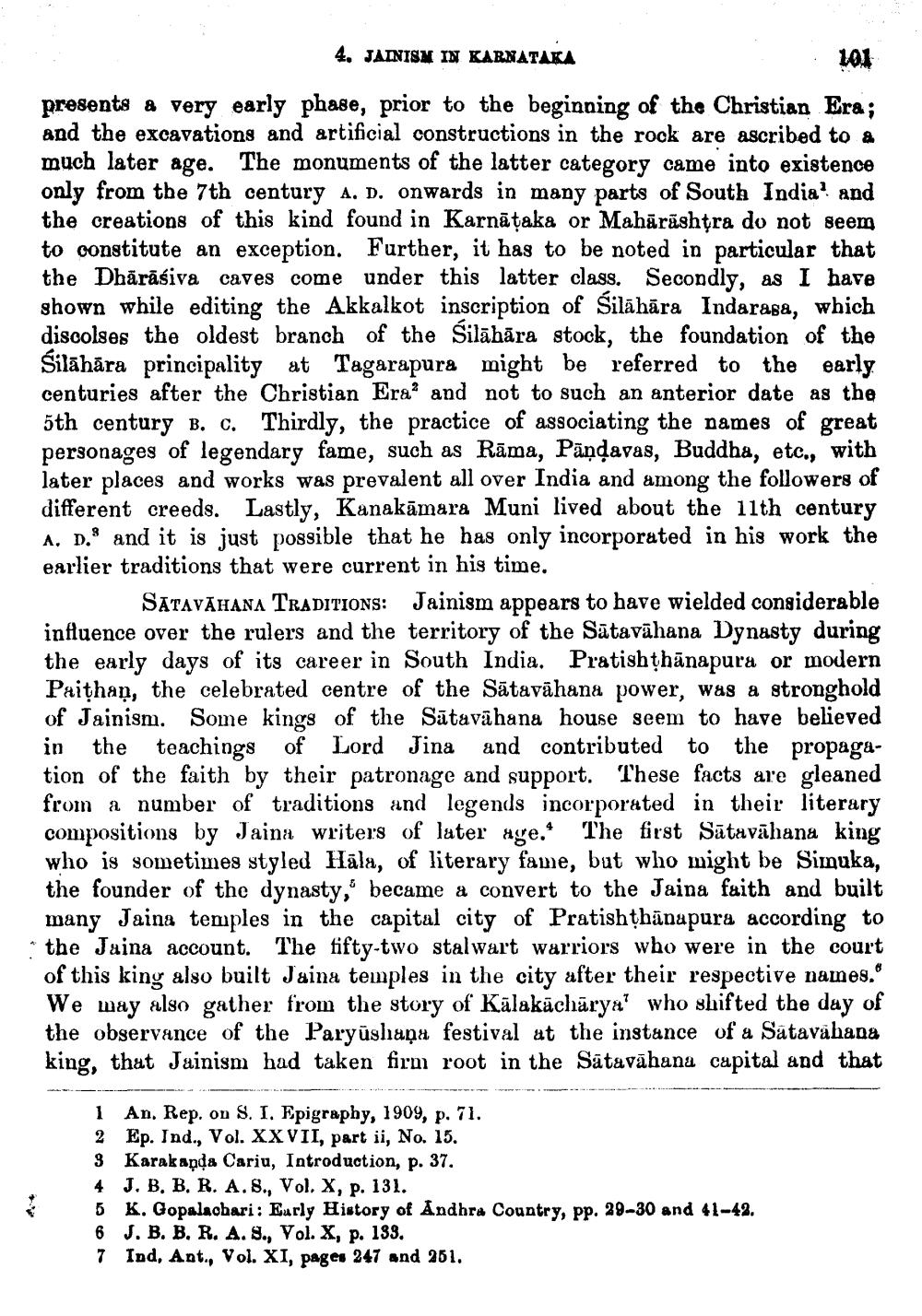________________
4. JAINISM IN KARNATAKA
· 101 presents a very early phase, prior to the beginning of the Christian Era ; and the excavations and artificial constructions in the rock are ascribed to a much later age. The monuments of the latter category came into existence only from the 7th century A. D. onwards in many parts of South India? and the creations of this kind found in Karnataka or Mahārāshtra do not seem to constitute an exception. Further, it has to be noted in particular that the Dhārāśiva caves come under this latter class. Secondly, as I have shown while editing the Akkalkot inscription of Silāhāra Indarasa, which discolses the oldest branch of the Silāhāra stock, the foundation of the Silāhāra principality at Tagarapura might be referred to the early centuries after the Christian Eraand not to such an anterior date as the 5th century B. C. Thirdly, the practice of associating the names of great personages of legendary fame, such as Rāma, Pāņdavas, Buddha, etc., with later places and works was prevalent all over India and among the followers of different creeds. Lastly, Kanakāmara Muni lived about the 11th century A, D.S and it is just possible that he has only incorporated in his work the earlier traditions that were current in his time.
SĀTAVĀHANA TRADITIONS: Jainism appears to have wielded considerable influence over the rulers and the territory of the Sātavāhana Dynasty during the early days of its career in South India. Pratishthānapura or modern Paithan, the celebrated centre of the Sātavāhana power, was a stronghold of Jainism. Some kings of the Sātavāhana house seem to have believed in the teachings of Lord Jina and contributed to the propagation of the faith by their patronage and support. These facts are gleaned from a number of traditions and legends incorporated in their literary compositions by Jaina writers of later age. The first Sātavāhana who is sometimes styled Hāla, of literary fame, but who might be Simnuka, the founder of the dynasty, became a convert to the Jaina faith and built many Jaina temples in the capital city of Pratishthānupura according to * the Jaina account. The fifty-two stalwart warriors who were in the court of this kiny also built Jaina temples in the city after their respective names. We may also gather from the story of Kālakächārya? who shifted the day of the observance of the Paryūshana festival at the instance of a Satavahana king, that Jainism had taken firm root in the Sātavāhana capital and that
1 An. Rep. on S. I. Epigraphy, 1909, p. 71. 2 Ep. Ind., Vol. XXVII, part ii, No. 15. 9 Karakanda Cariu, Introduction, p. 37. 4 J. B. B. R. A.S., Vol. X, p. 131. 5 K. Gopalachari: Early History of Andhra Country, pp. 29-30 and 41-42. 6 J. B. B. R. A.S., Vol. X, p. 133. 7 Ind, Ant., Vol. XI, pages 247 and 261.




